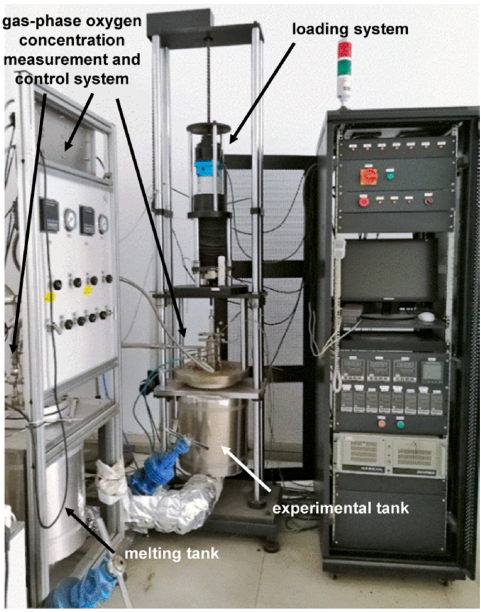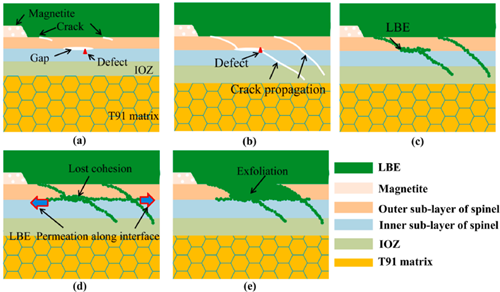Recently, the research group of Prof. Qunying Huang, Institute of Nuclear Energy Safety Technology, Hefei Institutes of Physical Science, Chinese Academy of Sciences, has made progress in the corrosion behavior and mechanism of lead-based reactor materials. The results are published in the international well-known journal in corrosion field “Corrosion Science”. Lin Luo is the first author, Zhizhong Jiang and Zunqi Xiao are the co-corresponding authors. Lead-based reactor with lead-bismuth eutectic alloy (LBE) as the coolant is the most promising one among Gen-IV nuclear reactors. LBE has strong corrosive effect on structural materials at high temperature and/or velocity. Hence, the compatibility of structural materials with LBE is one of the key issues in the application of lead-based reactor. When the oxygen concentration in LBE is controlled to an appropriate level, a protective dense oxide scale will be formed on the surface of structural materials. The oxide scale separates structural materials from LBE, which not only inhibits the dissolution of matrix elements, but also weakens the effect of LBE on the mechanical properties of structural materials. However, the external stress caused by the load and thermal cycle may lead to the rupture and failure of the oxide scale during long time operation. Therefore, it is important to study the failure behavior of protective oxide scale in LBE under external stress while for the structural design and safety analysis on the lead-based reactor. A small tapered conical specimen was designed in this work based on the “high throughput method”. The cracking and exfoliation behavior of the oxide scale on martensitic steel T91 specimen in LBE was studied with the self-developed slow rate tensile test system in LBE. It is found that the magnetite layer located in the outermost layer of oxide scale would fall off gradually with the increase of tensile stress. When the stress at the inner concave of the specimen exceeded a certain threshold, the protective spinel layer would crack band-like and the outer sub-layer of spinel partially exfoliate. Moreover, when a part outer sub-layer of spinel surrounded by the cracks completely lost its binding to other parts of the oxide scale due to LBE permeation, the outer sub-layer of spinel there would fall off. Based on above phenomenon, a model on cracking and exfoliation for the outer sub-layer of spinel was proposed. This study shows that the protective oxide scale in the concave parts of component will firstly fail, which should be paid more attention in the structural design and safety analysis of lead-based reactor. This work is funded with the National Key R&D Program of China and the National Natural Science Foundation of China. 
Fig. 1. Liquid metal slow strain-rate tensile system 
Fig. 2. Schematic diagram for cracking and exfoliation of spinel layer under the synergistic effect of LBE and tensile stress. The article link:https://www.sciencedirect.com/science/article/pii/S0010938X21000901#! |